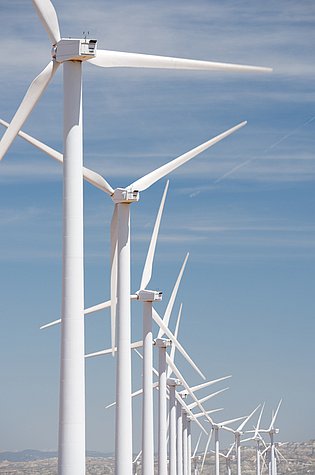Verification testing for single blade installation
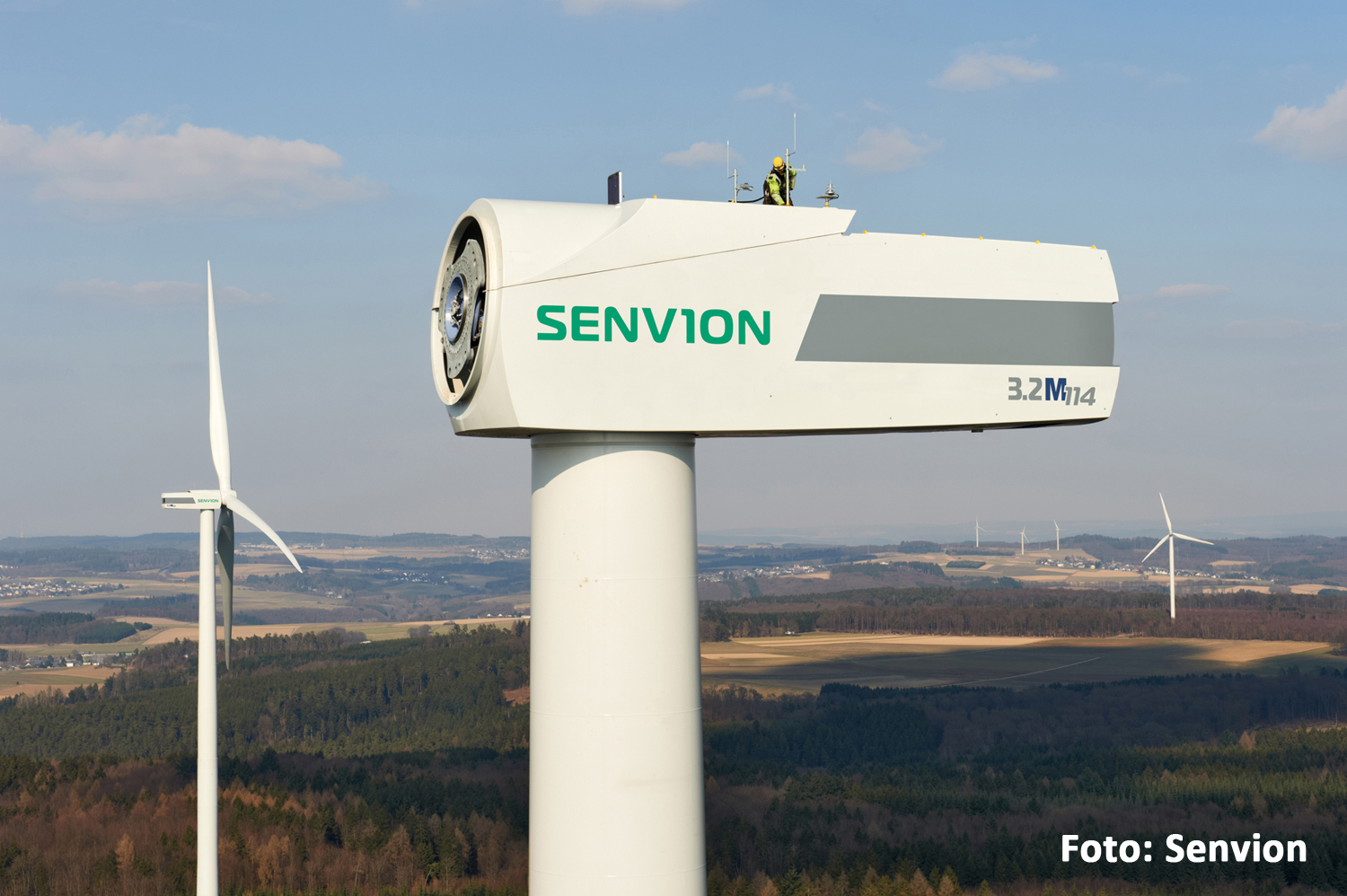
- Company: Directtech GmbH
- Industry: Energy & Utilities
- Location: Germany
- imc DAQ System: Robust and distributable imc CRONOSflex
- imc DAQ Software: imc FAMOS
Small-scale wind turbine certification with imc systems
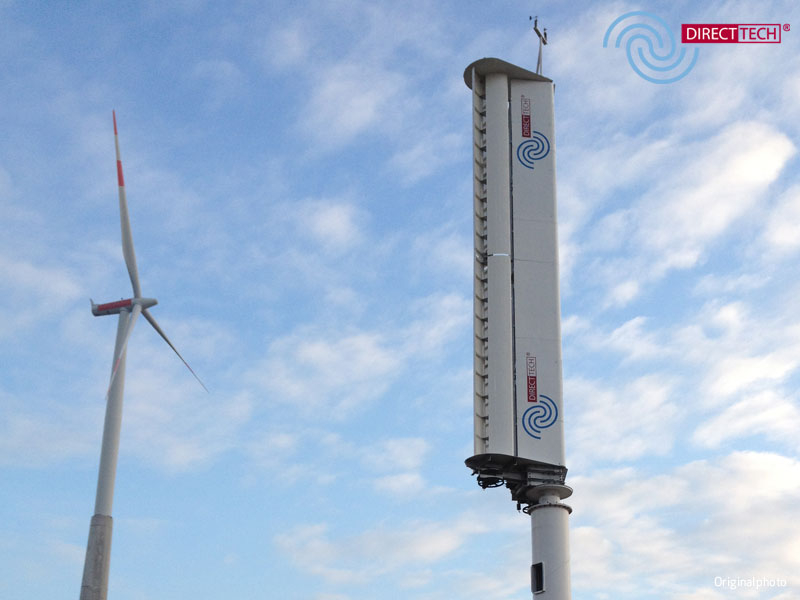
- Company: Directtech GmbH
- Industry: Energy & Utilities
- Location: Germany
- imc DAQ System: Robust and distributable imc CRONOSflex
- imc DAQ Software: imc FAMOS
imc solutions for wind turbine testing - on land, at sea and in the air
What challenges does wind turbine testing pose to data acquisition technology?
The workhorse of the energy transition is windmills and wind farms, which are completely unprotected from meteorological events such as coldness, frost, and condensation in nature. Furthermore, wind turbines are tall installations, that tower above the rest of the environment and are heavily exposed to frequent lightning strikes. In order to perform long-term measurements here, it is necessary to protect the measurement equipment from these events.
An important factor is the question "How much energy does the wind turbine deliver at what specific wind speed?" Wind turbines are often run using optimized speed control schemes to achieve ideal efficiency, so the power curve should be measured directly at the site. The same applies to mechanical loads, which, in addition to environmental influences, have an impact on the operational stability of the turbine.
The emitted noise is an important feature to increase the acceptance of wind turbines. This is where the question "how loud is the turbine?" come up, but the loudness alone is not, often sound containing signals disturbs our well-being. Measuring the sound emission is an important parameter for this.
Last but not least, there is the question of the grid compatibility of the system, "with what quality is the energy fed into the existing electrical grid?”
Challenges and Solutions for Data Acquisition in Wind Turbine Testing
Why imc wind turbine testing solution?
Whether measuring or monitoring in the wind energy plant, whether measuring, controlling and feedback control at test benches for component testing - data acquisition with imc systems is productive, easy to execute and profitable.
Measurements on wind turbines are carried out under difficult environmental conditions such as coldness, heat, humidity, condensation, vibrations, electromagnetic interference and transient voltage peaks require correspondingly adapted measuring instruments. This applies especially to long-term and field measurements.
The robust imc measuring systems work reliably in a PC network, but also independently of a PC. Thanks to the integration of all components required for signal conditioning, AD conversion, real-time calculation and data storage within one system, the imc solutions can be used completely autonomously in remote plants.
Even under harsh environmental conditions, imc measurement technology has proven itself and performs reliably in the extreme environments of a wind turbine. Strong temperature fluctuations within short periods of time and wide temperature range from -40 °C up to +85 °C do not cause any problems for imc measuring devices.
Wind energy prototype test
Wind turbine surveying is an important step in prototype development to ensure that turbine performance and reliability meet expectations.
There are several aspects that should be considered when surveying wind turbines, such as the wind conditions at the site, the orientation and height of the turbine, the blade geometry, the power of the generators, and the amount of power generation.
IEC-61400 is a series of international standards dealing with wind turbine design, operation, and maintenance. The standards were developed by the International Electrotechnical Commission (IEC) and are considered an important benchmark for the wind energy industry worldwide.
The IEC-61400 series of standards includes several parts covering specific aspects of WTs. such as:
- IEC 61400-1: Design requirements
- IEC 61400-2: Design requirements for small turbines
- IEC 61400-3: Design requirements for offshore
- IEC 61400-4: Design requirements for gearboxes
- IEC 61400-5: Design requirements for rotor blades
- IEC 61400-6: Tower and foundation design
- IEC 61400-11: Acoustic noise measurement
- IEC 61400-12: Power performance measurement
- IEC 61400-13: Measurement of mechanical loads
- IEC 61400-14: Sound power and tonality
- IEC 61400-21: power quality and grid reactive effect
imc Testing Solution Capabilities
Overview Subpages

Sound measurement methods are used to measure the sound level of wind turbines. The sound level is an important factor that must be taken into account in the design, construction and operation of wind turbines to ensure that the turbines comply with the applicable sound limits and do not adversely affect the health and well-being of nearby residents.
To this end, there is the sound measurement procedure, in which a human tester measures the sound level with a meter placed near the wind turbine, a wind measurement mast, and measured values such as the turbine's power and speed. Measurements are expressed in decibels (dB) and can be made in different frequency ranges to evaluate the sound level in relation to human perception. For this purpose, there is the special measurement procedure, which is defined in the IEC 61400-11 standard and performs measurements in the close range of the wind turbine.

How much energy does the wind turbine deliver at which wind speed? Wind turbines are often operated using optimized speed control concepts in order to achieve ideal efficiency. This can be achieved by adjusting the position of the angle of attack (pitch control) of the blades.
IEC-61400-12-1 Specifically, the standard describes the requirements for measuring wind speed, wind direction, air density, power production and operating conditions of WTs. It also specifies the measurement uncertainties to be considered when measuring these parameters. IEC-61400-12-1 is an important standard for evaluating wind turbine performance and is used by regulators, investors and wind farm operators worldwide.
IEC 61400-12-2 describes the methods for measuring the power curve of wind turbines, including the selection of the test site, the measuring instruments and the procedures for data analysis and data interpretation.
Typical measuring points:
Wind speed and wind direction at hub height, air temperature and air pressure
Electrical power, rotor speed, pitch and azimuth angle
IEC 61400-13 describes the requirements for measuring the aerodynamic forces acting on the wind turbine rotor blades, as well as the mechanical forces generated by the rotation of the rotor and other movements of the turbine. The standard also specifies requirements for monitoring and evaluation of vibrations and other oscillations that may be caused by the loads.
The standard also contains provisions for checking the loads on wind turbines in operation to ensure that the turbines can withstand the loads and be operated safely.
IEC 61400-13 is an important standard for the wind energy industry because it helps ensure that loads on wind turbines are measured and evaluated in a standardized way. The standard is used by wind turbine manufacturers, wind farm operators and regulatory authorities worldwide.
Typical measuring points:
Pivoting, bending and impact moments in the rotor blades
Torsional moments in the rotor shaft
Bending and torsional moments in tower base and tower head
Electrical power, rotor speed, pitch and azimuth angle
Wind direction at hub height, air temperature and air pressure
IEC 61400-14 is part of the IEC 61400 series of standards and describes the requirements for measuring and evaluating the sound power and tonality of wind turbines. The standard specifies the procedures for measuring and evaluating the sound emissions of wind turbines to ensure that they meet the legal requirements for sound insulation. The sound power and tonality of wind turbines are important factors to consider when evaluating the sound emanating from the turbines.
Sound power refers to the total amount of sound emitted by a wind turbine and is commonly expressed in decibels (dB). Sound power depends on several factors, such as the size of the turbine, rotor speed, and wind speed.
Tonal content of wind turbines refers to the tonal character of the sound and is often referred to as the "tonal component." Tonality occurs when the WTGs produce sound that consists of a single frequency or a series of frequencies at certain speeds or wind speeds. This can be perceived as a buzzing or humming noise and can be particularly annoying to nearby residents.
ISO 61400-14 is an important standard for the wind energy industry because it helps ensure that sound emissions from wind turbines are measured and evaluated in a standardized way. The standard is used by wind turbine manufacturers, wind farm operators and regulatory authorities worldwide.
High reliability and good quality of power supply are essential. To evaluate interactions within a distribution network and to assess the quality of supply, continuous monitoring and analysis of power supply networks at the medium and low voltage level is necessary. With imc CRONOSflex and the CRFX/HV2-2U2I amplifiers for Rogowski coils and voltages up to 1000 V, imc offers a mobile power quality analyzer that combines four functions:
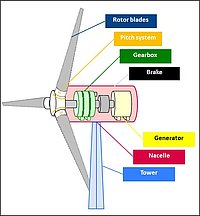
The components of a wind turbine include rotor blades, nacelle, gearbox, generator, tower and pitch system.
The rotor blades are one of the most important components of a wind turbine, as they help convert wind energy into electricity using aerodynamic force.
The nacelle consists of components that convert the kinetic energy of the wind into mechanical energy.
The gearbox is used to increase the speed from the slow-moving main shaft to the fast-moving shaft, which is connected to an electric generator via a brake.
The wind turbine generator converts the mechanical energy into electrical energy.
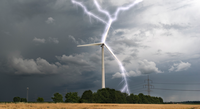
Wind turbines are tall installations that are often positioned in such a way that they are exposed to frequent lightning strikes. The aim of the imc lightning protection modules is to minimize the risk of destruction or the possibility of damage to the measuring system by a lightning strike.
Learn more about Lightning and surge protection for wind turbines
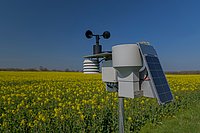
The weather station is a combination of various meteorological sensors in a very small space. With the imc STUDIO 3PDI interface, all important parameters are recorded and displayed in imc STUDIO. A time-consuming mechanical installation of the individual sensors is not necessary. The connection is made via a USB cable as RS485 and a 24 V supply cable.






